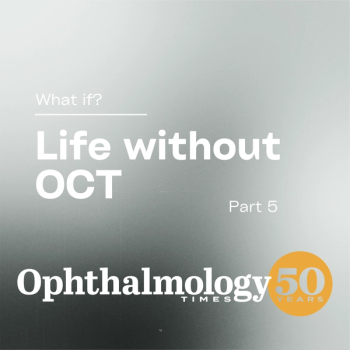
In the pipeline: Novel MIGS stents in various stages of trials
New devices to lower IOP and facilitate aqueous outflow via minimally invasive glaucoma surgery are being developed, and early results from clinical trials are favorable for some.
Take home:
New devices to lower IOP and facilitate aqueous outflow via minimally invasive glaucoma surgery are being developed, and early results from clinical trials are favorable for some.
By Nancy Groves; Reviewed by Angelo P. Tanna, MD
Chicago-A number of investigational implant devices for
Dr. Tanna reviewed several stents developed for
The investigational implants lower IOP by shunting aqueous humor to the subconjunctival space, directly to Schlemm’s canal, or to the suprachoroidal space. For the subconjunctival space, one device under development is the XEN gel stent from AqueSys.
This collagen stent, using an ab interno approach, is 6 mm long and about the width of a human hair. It is injected through a self-sealing corneal incision using a preloaded injector. AqueSys has an approved investigational device exemption and is enrolling subjects for clinical trials.
Two devices that shunt aqueous directly to Schlemm’s canal are the
“Those of you who’ve used the first-generation iStent know that it takes considerable manual dexterity and skill to be able to successfully implant this into Schlemm’s canal,” he said. “The intent, I think, for the development of the iStent inject was to develop an easier-to-implant device.”
Dr. Tanna provided the results of two clinical trials of the new iStent. In one prospective, non-randomized clinical trial, 20 subjects with cataract and open-angle glaucoma (OAG) or ocular hypertension underwent phacoemulsification and implantation of two devices.
“There was a very low incidence of significant complications,” Dr. Tanna said. Transiently elevated IOP was reported in 15% of eyes, and peripheral anterior synechiae in 5%.
“However, what was very impressive about the study was the very large proportion of patients in whom, on the first postoperative day, only one stent was visualized,” he said. “There were 4 patients in whom a stent was effectively lost at some point.”
There were 3 patients in whom only one of the two stents were implanted and 6 cases in which the stent was positioned too deeply.
Despite these complications, there was a statistically significant 3.2 mm Hg reduction in IOP compared with baseline at the 1-year time point. The study by Arriola-Villalobos et al. was published in the British Journal of Ophthalmology, October 2013.
A more recent prospective, unmasked, randomized, multicenter study from Fea et al. in Clinical Ophthalmology May 2014 compared the iStent inject versus 2 ocular hypotensive agents in patients with OAG not controlled on one medication; 94 patients were randomly assigned to surgery with iStent inject devices and 98 to receive medical therapy only (fixed-combination timolol-latanoprost).
“Keeping in mind problems like regression to the mean and lack of a control group, we could expect some reduction from cataract surgery alone in the iStent group. However, we do see a statistically significant reduction in the IOP at the 12-month timepoint in both groups,” Dr. Tanna said. “There’s no difference between the two groups, suggesting that implantation of two iStent inject devices is as effective as the fixed-combination timolol-latanoprost, taking into account all the limitations I mentioned in the clinical trial.”
At 12 months, 94.7% of eyes in the stent group reported an unmedicated IOP reduction of ≥20%; 91.8% of eyes in the medical therapy group had an IOP reduction ≥20% compared with baseline. A missing stent was reported in only 1% of patients; the incidence of elevated IOP was also 1%.
The Hydrus microstent is another device inserted into Schlemm’s canal. This 8 mm-long curvilinear device is implanted ab interno then advanced with a device supplied with the stent.
“The theoretical advantage here is that there is access to more collector channels, and therefore potentially a lower IOP can be achieved,” Dr. Tanna said.
He summarized data from the Hydrus II trial, a randomized, multicenter study of phacoemulsification alone versus phacoemulsification and Hydrus implantation; 100 patients were enrolled from 7 European sites. Patients were treated with medications to achieve a target IOP. As expected, IOPs were similar in the two groups at the 18-month time point (16.6 mm Hg), Dr. Tanna said.
However, there was a significant difference in the number of medications used, with patients in the Hydrus group requiring significantly fewer. Moreover, only 12.5% of patients in the Hydrus group versus 47.8% in the control group required at least 1 medication.
NEXT: Subchoroidal space
Reviewing devices under development for the subchoroidal space, Dr. Tanna also mentioned the iStent Supra (Glaukos) and the CyPass Micro-Stent (Transcend Medical).
The iStent Supra is a microstent designed to shunt humor from the anterior chamber to the subchoroidal space. A multicenter investigation of the iStent Supra in conjunction with cataract surgery is enrolling patients at several sites in the United States. At this time, no clinical trial data are available.
One efficacy and safety study investigating the CyPass microstent has been completed; Hoeh et al. reported their initial clinical experiences in the Journal of Glaucoma in October 2014 (epub ahead of print). In the study, 167 eyes of 142 patients underwent combined phacoemulsification, IOL insertion, and microstent implantation; there was no control group.
Two cohorts were identified based on medicated baseline IOP: cohort 1, n = 65 eyes, IOP ≥21 mm Hg; cohort 2, n = 102 eyes, IOP <21 mm Hg. Statistical shortcomings included the fact that 37% of subjects were lost to follow-up before the 12-month visit and the investigators did not correct for inter-eye correlation with respect to IOP outcomes.
The incidence of adverse events included hypotony in 13.8% of eyes and implant obstruction in 5.4%. Two patients required explantation or implant reposition, and 6% required additional glaucoma surgery.
There was a significant reduction in IOP, Dr. Tanna said. In cohort 1, eyes with uncontrolled IOP at baseline, the mean IOP decreased 35%; eyes in cohort 2 maintained a mean IOP of <21 mm Hg. Both groups demonstrated a significant decline in glaucoma medication usage: 49% in cohort 1 and 75% in cohort 2.
Although studies are not yet available in the literature or in the public domain for some of the new stents, evidence for others is encouraging at this early stage, Dr. Tanna said.
“I would demand to look at well-controlled clinical trial data and also keep an open mind as these devices continue to evolve,” he said.
Angelo P. Tanna, MD
This article was adapted from Dr. Tanna’s presentation during Glaucoma Subspecialty Day at the 2014 meeting of the American Academy of Ophthalmology. Dr. Tanna reported no relevant conflicts of interest.
Newsletter
Don’t miss out—get Ophthalmology Times updates on the latest clinical advancements and expert interviews, straight to your inbox.


















































.png)


